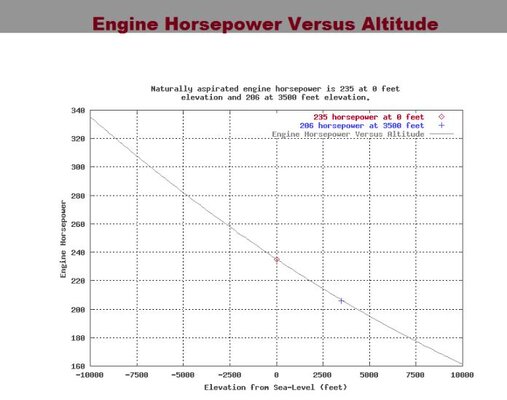DonTom
Well-known member
Do others here notice a difference in output capacity with their Onan Gennys at high elevations?
Here, I am above 7,000' elevation. My 4KW (33 amp) genny (continuous capacity 30 amp?/ 3600 watts?) dies at a load of above around 13 amps (1,560 watts) or so here. Under heavier loads, the RPM/frequency drops low enough to kill the genny. At lower loads, all is fine. No problem using my converter to charge back up my 300 AH lith, so not a real big deal.
I noticed the issue while trying to charge my electric motorcycle. I can charge it at 1,400 watts, but not at 2,400 watts. I have charged it at 2,400 watts from this same genny at other locations.
This reminds me of how cars in the late 60's and early 70's (or even my 1971 motorcycle) ran at 7,000'. Perhaps will go uphill at 35 MPH max, but over 100 MPH at a similar hill at sea level. Even my 2022 RV 6.5 KW genny uses a carb and I don't think it has any elevation compensation. But I am in my old RV here with my old 4K Onan.
-Don- Tom's Place, CA
Here, I am above 7,000' elevation. My 4KW (33 amp) genny (continuous capacity 30 amp?/ 3600 watts?) dies at a load of above around 13 amps (1,560 watts) or so here. Under heavier loads, the RPM/frequency drops low enough to kill the genny. At lower loads, all is fine. No problem using my converter to charge back up my 300 AH lith, so not a real big deal.
I noticed the issue while trying to charge my electric motorcycle. I can charge it at 1,400 watts, but not at 2,400 watts. I have charged it at 2,400 watts from this same genny at other locations.
This reminds me of how cars in the late 60's and early 70's (or even my 1971 motorcycle) ran at 7,000'. Perhaps will go uphill at 35 MPH max, but over 100 MPH at a similar hill at sea level. Even my 2022 RV 6.5 KW genny uses a carb and I don't think it has any elevation compensation. But I am in my old RV here with my old 4K Onan.
-Don- Tom's Place, CA

